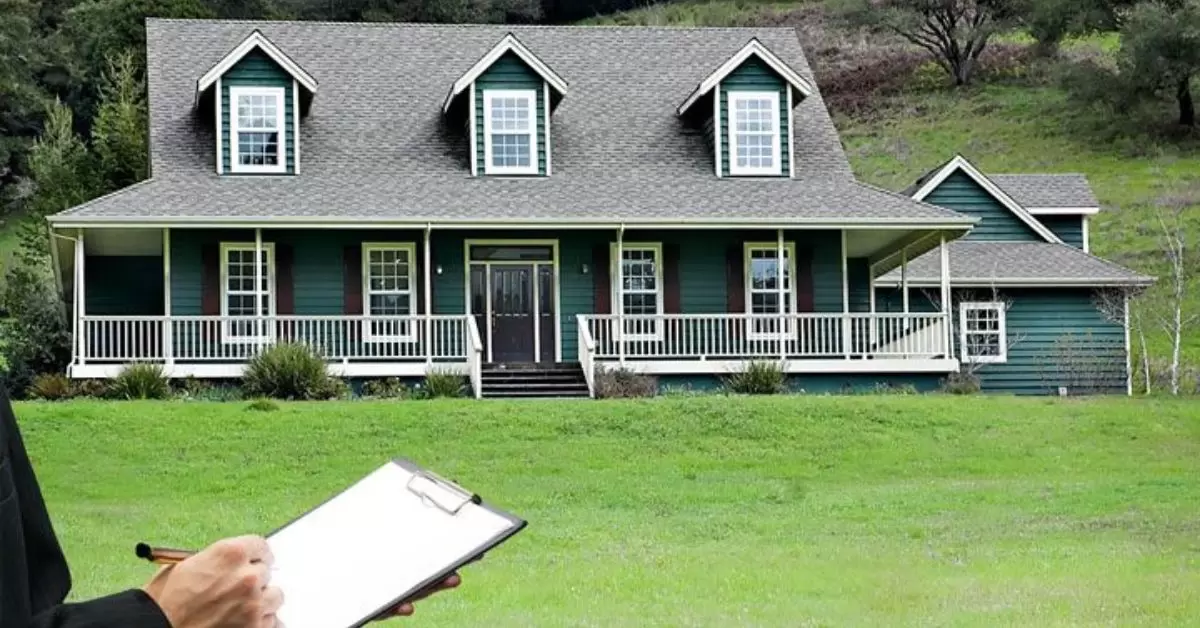Owning property comes with a bundle of rights, but in some cases, those rights are shared or limited by easements. An easement grants someone else the right to use your land for a specific purpose.
While this may sound like an infringement, easements are quite common and often beneficial. Understanding what easements are and how they work, especially the unique category of easements in gross,” is crucial for all property owners.
What is an Easement?
An easement is a legal right to use another person’s land for a particular reason. It essentially allows a non-owner to access or make use of someone else’s property in some way. There are two main types of easements:
- Easement Appurtenant: This type of easement benefits a particular piece of land, rather than an individual person or entity. It is attached to and transfers with that parcel of real estate even when ownership changes hands.
- Easement in Gross: Unlike appurtenant easements, an easement in gross confers its benefits to a specific individual, company, or organization not just a property.
Common examples of easement uses include:
- Utility lines underground or overhead
- Shared driveways or pathways
- Access to landlocked parcels
- Recreational trails
- Beach access
Easements Appurtenant
The most common type, an easement appurtenant, is a right that benefits one piece of land by allowing use of an adjacent property. A classic example is a shared driveway between two homes. The easement is attached to one property and allows access over a portion of the neighboring parcel.
These types of easements are transferred automatically to new owners when the benefited property is sold. The rights and responsibilities remain tied to the land itself, rather than belonging to a specific person.
Easements in Gross
In contrast, easements in gross do not benefit a particular property. Instead, the easement rights belong to a person, company, or organization regardless of whether they own land adjoining the easement area.
Some common examples include easements granted to:
- Utility companies for power lines, pipelines, etc.
- Railroads for train tracks
- Government agencies for sidewalks or trails
- Non-profit land trusts for conservation purposes
Unlike appurtenant easements, the rights of an easement in gross can be transferred separately from property ownership. For example, a utility company may sell its easement rights to another utility if service areas change.
How Are Easements Established?
Easements can be created in several different ways. The most straightforward is by express grant, where the easement rights are directly conveyed through a deed or other written document. This lays out the specific terms and conditions.
In other cases, an implied easement may arise based on the circumstances and prior use of the land, even without express written terms. A landlocked parcel that has historically crossed an adjoining property to access a road would likely have an implied easement.
An easement by necessity is another implied type that is recognized to allow access and basic use that is truly necessary, such as for the only road or utility line serving a property.
Finally, prescriptive easements can be established through long term, continuous use and occupation that is open and apparent over a period of years set by state law.
No matter how an easement originates, having clear documentation and agreements in place is crucial. This defines the allowable use, maintenance responsibilities, potential expiration terms, and other rights for both parties.
Easement Rights and Property Value
The presence of easements on a property can impact its market value, for better or worse. In general, easements that provide beneficial use or access tend to increase property values, while those causing a nuisance decrease values.
Some examples of valuable easements include:
- Beach or lake access
- Hiking/recreation trails
- Large setbacks from roads
Detrimental easements that may lower values:
- Major utility lines or cell towers
- Railroad tracks
- Heavy traffic or noise
When buying or selling land, it’s critical to carefully consider how any existing easements may affect the property’s use, enjoyment, and resale potential down the road. An experienced real estate professional can help evaluate the easement impacts.
Dealing with Easements as a Property Owner
If your property benefits from an easement over a neighboring parcel, you have certain rights but also responsibilities. As the easement holder, you must:
- Use the easement area only for its stated purpose
- Avoid causing unreasonable damage or interference
- Maintain the portion of the easement you use
- Obtain permission for any changes beyond the granted rights
Likewise, if an easement crosses your land, you as the property owner must:
- Allow the easement holder to access the easement area
- Not obstruct or interfere with their use as permitted
- Maintain the general condition and accessibility
Both parties are obligated to cooperate and minimize conflicts. In some cases, shared maintenance costs may be addressed in the easement agreement.
Title Searches for Easements
When purchasing a property, a thorough title search and review of the existing survey is critical to identify any easements or potential easement claims that could impact the land.
These legal property reports will usually note:
- Location and dimensions of recorded easements
- Identity of the easement holder(s)
- Purpose and rights granted by the easement
- Any conditions, limits, or termination terms
It’s advisable to obtain legal counsel for interpretation and to potentially negotiate easement modifications during the sale process.
Marking Easement Boundaries
To avoid misunderstandings and encroachments, the boundaries of easement areas should be clearly marked with permanent structures like survey pins or signs. Both the property owner and easement holder may want photographic evidence of the area’s original condition.
Easements for New Homeowners
For those buying a home for the first time, dealing with easements can be confusing. However, it’s important to understand your rights and responsibilities.
Common residential easements:
- Utility line easements for water, sewer, power, cable, etc.
- Shared driveway easements between neighboring homes
- Path or trail easements allowing neighborhood access
- Easements for common amenities like pools, parks, etc.
Your title documents will disclose these prior to closing. Review easements carefully and be sure you understand the terms, costs, and impacts. Getting easement rights and limitations in writing during purchase is advisable.
Easements for the General Public
We frequently encounter public easements as part of everyday life. These grant access rights to government entities and certain companies that provide public services or infrastructure.
Examples include:
- Sidewalk and road easements
- Utility line easements for electric, cable, pipelines, etc.
- Public trails and greenways
- Conservation easements protecting natural areas
While public easements allow use by the general population to some degree, that use is not unlimited. Local laws and easement terms dictate when access must be permitted versus restricted for operations, security reasons, etc.
Legal Action and Easements
Disagreements over easements sometimes require legal intervention and court action. Reasons this may be necessary:
- Interference or misuse of an easement area
- Expanding easement use beyond granted rights
- Termination of an abandoned or obsolete easement
- Interpreting ambiguous or contradictory easement terms
In such cases, the first step is usually to attempt negotiation or mediation between the parties to resolve the conflict. If that fails, filing a civil lawsuit over the easement becomes an option, though this can be costly.
The court applies relevant state laws and interprets the easement agreement to determine whether rights were violated or if termination is appropriate. Rulings can enforce the easement, modify it, or extinguish it entirely based on the facts presented.
Legal Action and Easements in Gross
When conflicts arise regarding easements in gross, the legal considerations are a bit different since the easement does not benefit an adjacent property owner. The easement holder’s uses and rights are the central focus.
For example, if a utility company exceeds the scope of its easement rights across private land, the property owner may sue to enforce the easement limitations. Likewise, an attempt to terminate an essential utility easement without proper cause would likely be denied.
Since easements in gross are so commonly held by major companies, municipalities, and organizations with significant resources, legal battles can become complex and high-stakes affairs. Mediation and finding middle-ground solutions is prudent whenever possible.
What is an Easement in Gross in Real Estate?
Easements in gross are a special type of property right that allow a specific person, company or entity to use land they do not own for a stated purpose. Unlike a standard easement, the easement in gross:
- Benefits an individual or organization, not just a neighboring property owner
- Can be transferred or sold separately from any property ownership
- Is often granted to utilities, railroads, government agencies, etc.
Types of Easements in Gross
There are several common varieties of easements in gross that property owners may encounter:
Utility Easements
Utility companies like electric, gas, cable, and telecommunications providers frequently hold easements across private lands to run their service lines. These allow access for installation, maintenance, and repairs as needed.
Railroad Easements
Railroads obtain easements from property owners to lay railroad tracks and operate trains across parcels they don’t own. These can be expansive easements with specific clearance requirements.
Conservation Easements
Land trusts and government agencies use conservation easements to protect environmentally sensitive areas and habitats from development, even on private lands. Landowners retain ownership but have limitations.
Public Recreational Easements
Municipalities and park districts often hold recreational easements for public hiking trails, greenways, and other outdoor amenities that cross multiple properties.
Creating an Easement in Gross
Easements in gross can be created in several ways:
Express Grant Deed
The most direct method is through an express grant deed, where the easement rights and terms are defined in writing and executed by the property owner.
Necessity Easements
If the easement is truly necessary to access or utilize the property, such as a utility line, courts may grant it as an easement of necessity even without an agreement.
Prescriptive Easements
After an extended period of continuous, open use and occupation by the individual or entity, a prescriptive easement in gross may be established based on state property laws.
Easement Maintenance and Repair
One key consideration with easements in gross is clearly defining maintenance roles and responsibilities between the easement holder and the property owner.
Responsibilities of Easement Holder
Generally, the individual or entity benefiting from the easement must maintain and repair the section they use and any related equipment or structures.
Responsibilities of Property Owner
The underlying property owner has limited responsibilities, but must not obstruct or interfere with the easement holder’s access and permitted uses.
Cost Sharing Arrangements
For major infrastructure like utility lines or railroads, the easement agreements may stipulate cost-sharing arrangements for extensive repairs and replacements between the parties.
Terminating an Easement in Gross
Easements in gross do not automatically terminate when properties transfer ownership. But there are scenarios where they may be modified or extinguished:
By Agreement
If both the easement holder and property owner mutually agree, an easement in gross can be terminated through a release document.
By Abandonment
If the easement holder clearly abandons use of the easement area over a long period of time, it may be legally terminated due to abandonment.
Through Court Action
In other cases, a court may terminate or modify an easement in gross if it has become obsolete, is being misused, or other legal justifications exist.
Termination often requires the property owner to follow specific legal notification processes to the easement holder prior to court action.
When an easement in gross is terminated, it reverts the full property rights back to the land owner. However, terminating certain types of essential utility or public easements is extremely difficult without proper cause.
Overall, easements in gross are vital instruments that facilitate infrastructure, conservation, and public needs across private properties. Understanding the rights, responsibilities, and legal implications for all parties is important for avoiding conflicts. Working with qualified real estate professionals and legal counsel is advisable when dealing with easement in gross issues.
Creating an Easement in Gross
In addition to express grants, necessity, and prescription, there are a couple other common ways easements in gross can be created:
Condemnation
If a utility company or government body needs to establish an easement for a public purpose or use, they may be able to exercise eminent domain powers to condemn and take an easement across private lands. Just compensation must be paid to the property owner.
Permissive Use
In some cases, an easement in gross may initially arise through the informal permission and acquiescence of the landowner allowing an individual or entity to use a portion of their property for a period of time. If this use continues openly for the prescribed period set by state law, it could “ripen” into a prescriptive easement.
Reservation in Deed
When subdividing and selling parcels, a property owner may reserve an easement in the deeds for themselves or another entity like a utility company to retain certain future rights to use portions of the lands conveyed.
No matter how created, properly documenting the easement in gross through a written agreement is crucial. This should cover the precise location, dimensions, scope of use, term length, maintenance duties, termination rights, and any other core terms.
Limitations on Easements in Gross
While easements in gross grant certain access and usage rights, those rights are not unlimited. The easement holder must operate reasonably within the specified dimensions and for only the stated purposes outlined in the easement agreement.
For example, a recreational trail easement across private land cannot be used for driving vehicles or any non-trail usage that exceeds the intended grant of rights and scope. Anything outside of the permitted use constitutes a trespass on the underlying property owner’s rights.
Likewise, an entity like a utility company cannot unilaterally expand its easement usage by laying additional utility lines or erecting structures beyond what the easement permits. Any expansion would require modifying the easement through negotiation and agreement with the landowner.
There may also be limitations around hours of permissible access or operation across an easement in gross for purposes of minimizing disruption to the property owner’s use and enjoyment. These specifics need to be properly outlined.
Valuing Easements in Gross
The presence of easements in gross on a property can impact its market value, similar to appurtenant easements. Easements granting access or desirable rights tend to enhance value, while those limiting property use or causing a nuisance generally detract from value.
For example, a conservation easement may decrease the economic value of land by restricting development, but could increase the value to certain buyers who want to preserve nature views and open spaces.
An experienced appraiser can assess factors like the easement’s scope, location on the property, potential for interference or expansion, and costs/benefits to calculate market value impacts. Valuation is important for selling properties, tax assessments, estate planning, and other transactions.
Easement Disputes and Resolution
Despite clear legal documentation, easement conflicts between the rights holders and property owners are common. Typical issues that arise include:
- Excessive Use – Using the easement for unintended purposes or beyond the granted scope
- Obstructions – Purposefully or unintentionally blocking easement access
- Lack of Maintenance – Failing to maintain or repair the easement area as required
- Need for Modifications – Changes in use or property calling for easement expansion/reduction
- Abandonment Claims – When the easement appears to have been abandoned over time
If disputes cannot be resolved through communication and negotiation between the parties, more formal mediation or legal action may be required.
Mediation can be an effective way to have a neutral third-party help facilitate an understanding and compromise that avoids costly litigation. The mediator does not have authority to impose a binding decision.
Litigation means filing a formal legal case in court to have a judge rule on interpretation of the easement agreement, enforcement of rights and duties, potential modifications, or even termination of the easement. This can quickly become expensive but may be necessary to conclusively settle the matter.
Frequently Asked Questions
What is an easement in gross?
An easement in gross grants a specific individual or entity the right to use someone else’s property for a particular purpose.
How does an easement in gross differ from other types of easements?
Unlike other easements, an easement in gross doesn’t benefit a particular piece of land owned by the holder but rather an individual or a company.
Who can benefit from an easement in gross?
Typically, utility companies, government agencies, or specific individuals (such as a neighbor needing access to land) can benefit from an easement in gross.
Can easements in gross be bought or sold?
Yes, easements in gross can be bought, sold, or transferred, although there may be legal restrictions or conditions attached to such transactions.
How long does an easement in gross last?
The duration of an easement in gross can vary. Some are granted for a specific period, while others may be indefinite or tied to the lifespan of a particular individual or business entity.
Final Words
An easement in gross is a legal right that grants a specific individual or entity the privilege to use someone else’s property for a particular purpose. Unlike other types of easements, which typically benefit a specific piece of land, an easement in gross serves the interest of a particular person or entity. Common beneficiaries of easements in gross include utility companies requiring access to land for infrastructure installation or maintenance, government agencies for public service purposes, or individuals needing a pathway or access route across another’s property.
These easements can be bought, sold, or transferred, subject to legal regulations and agreements. The duration of an easement in gross varies; it may be for a specified period, indefinite, or tied to the lifespan of a specific individual or business entity. Understanding easements in gross is crucial for property owners, as they can impact land use and property rights significantly.















